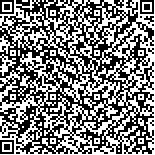甘莉,杨馨,李利娟,等.体感音乐疗法联合吞咽动画视听反馈训练对脑干卒中后患者吞咽功能和情绪状态的影响[J].中华物理医学与康复杂志,2023,45(5):414-417
扫码阅读全文

|
| 体感音乐疗法联合吞咽动画视听反馈训练对脑干卒中后患者吞咽功能和情绪状态的影响 |
|
| |
| DOI:10.3760/cma.j.issn.0254-1424.2023.05.006 |
| 中文关键词: 脑干卒中 体感音乐疗法 吞咽障碍 镜像视觉反馈 |
| 英文关键词: Brain stem stroke Stroke Vibroacoustic therapy Dysphagia Mirror training Neuro-visual feedback |
| 基金项目:四川青年创新科研课题(Q22004);四川省科学技术厅重点研发项目(2021YFS0069) |
|
| 摘要点击次数: 4295 |
| 全文下载次数: 4530 |
| 中文摘要: |
| 目的 观察体感音乐疗法联合吞咽动画视听反馈训练对脑干卒中患者吞咽功能和情绪状态的影响。 方法 采用计算机中心数表法将50例脑干卒中后吞咽障碍患者随机分为对照组和联合组,每组25例。2组患者均接受常规吞咽功能训练,对照组在此基础上增加直接摄食训练,联合组增加体感音乐疗法和吞咽动画视听觉刺激下的摄食训练。治疗前、治疗4周后,采用标准吞咽功能评价量表(SSA) 、Gugging吞咽功能评估表(GUSS)、正负性情绪量表(PNAS)对2组患者的吞咽功能和情绪状态进行评定。 结果 与组内治疗前比较,2组患者治疗4周后SSA评分下降,GUSS和PNAS评分增高(P<0.05)。联合组治疗4周后SSA评分[(22.40±3.06)分]、GUSS评分[(17.56±1.96)分]、PNAS评分[(87.52±9.78)分]均较对照组改善优异(P<0.05)。 结论 在常规吞咽功能训练基础上,增加体感音乐疗法和吞咽动画视听觉刺激下的摄食训练,可显著改善脑干卒中后吞咽障碍患者的摄食功能和情绪状态。 |
| 英文摘要: |
| Objective To observe any effect of combining vibroacoustic therapy with audio-visual feedback on the swallowing and the emotional state of persons with a swallowing disorder after a brainstem stroke. Methods Fifty brainstem stroke survivors with dysphagia were randomly divided into a control group and a combination group, each of 25. In addition to routine swallowing function training, the control group received additional direct feeding training, while the combination group was provided with vibroacoustic feeding training and swallowing stimulation from an animated audio-visual presentation. Before and after the treatment, the subjects′ swallowing function was quantified using the Standard Swallowing Assessment (SSA) scale and the Gugging swallowing screen (GUSS). The Positive and Negative Emotions Scale (PNAS) was used to quantify their emotional state. Results After the treatment the average SSA scores of both groups had decreased significantly, while the average GUSS and PNAS scores had increased significantly. The average improvements in all three measures were significantly greater in the combination group than in the control group. Conclusion In addition to routine swallowing function training, feeding training applying vibroacoustics and audio-visual stimulation can significantly improve the feeding function and emotional state of brainstem stroke survivors with dysphagia. |
|
查看全文
查看/发表评论 下载PDF阅读器 |
| 关闭 |